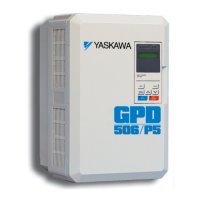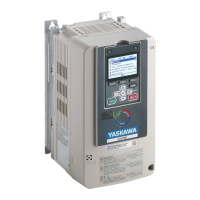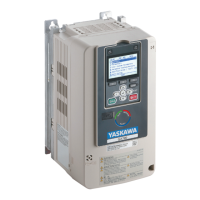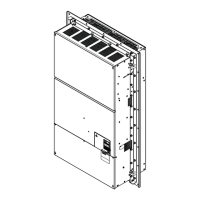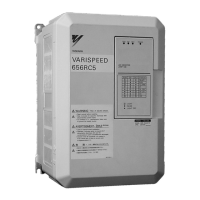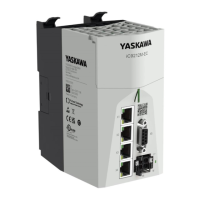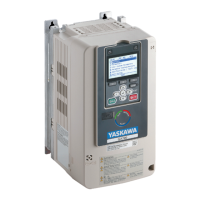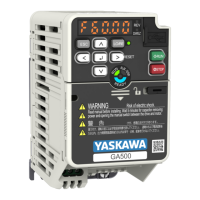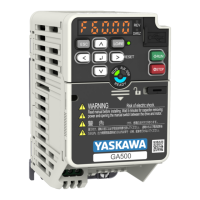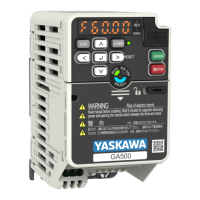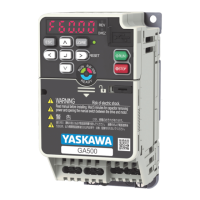7.10 Troubleshooting Without Fault Display
378 YASKAWA SIEPC71061705H GA700 Series Technical Manual
Causes Possible Solutions
The motor torque is not sufficient. Use a larger motor.
Note:
If these items are correct, the demand on the motor is more than the motor capacity:
• Parameter settings are correct.
• The drive does not detect ov [Overvoltage].
The drive and motor system reached the torque limit. • Examine the values set in L7-01 to L7-04 [Torque Limit] and increase them if necessary.
Note:
If the torque limit is enabled, deceleration time can increase because the drive cannot output
more torque than the limit.
• If H3-02, H3-10, H3-06 = 10, 11, 12, 15 [MFAI Function Select = Torque Limit] has been set,
examine the settings for the MFAIs.
• Examine the values set in H3-02, H3-10, and H3-06.
• Use U1-13 to U1-15 [Terminal A1, A2, A3 Input Voltage] to make sure that the analog
input values set to terminals A1, A2, and A3 are applicable.
The load is more than the internal torque limit as specified by the drive rated
current.
Replace the drive with a larger capacity model.
◆ The Load Falls When a Brake Is Applied
Causes Possible Solutions
The open/close timing of the brake is incorrect. Refer to “Notes on Controlling the Brake when Using the Hoist Application Preset” in the
technical manual and take appropriate measures.
The DC injection braking is not sufficient. Increase the value set in b2-02 [DC Injection Braking Current].
◆ There Is Audible Noise from the Drive or Motor Cables when You Energize the
Drive
Causes Possible Solutions
The relay switching in the drive is making too much noise. • Use C6-02 [Carrier Frequency Selection] to decrease the carrier frequency.
• Connect a noise filter to the input side of the drive power supply.
• Connect a noise filter to the output side of the drive.
• Isolate the control circuit wiring from the main circuit wiring.
• Use a metal cable gland to wire the drive.
• Shield the periphery of the drive with metal.
• Make sure that the drive and motor are grounded correctly.
• Make sure that ground faults have not occurred in the wiring or motor.
◆ Residual Current Monitoring/Detection (RCM/RCD) Trips During Run
Causes Possible Solutions
There is too much leakage current from the drive. • Increase the RCM/RCD sensitivity or use RCM/RCD with a higher threshold.
• Use C6-02 [Carrier Frequency Selection] to decrease the carrier frequency.
• Decrease the length of the cable used between the drive and the motor.
• Install a noise filter or AC reactor on the output side of the drive. Set C6-02 = 1 [2.0 kHz]
when connecting an AC reactor.
• Disable the internal EMC filter.
◆ Motor Rotation Causes Unexpected Audible Noise from Connected Machinery
Causes Possible Solutions
The carrier frequency and the resonant frequency of the connected
machinery are the same.
• Adjust C6-02 to C6-05 [Carrier Frequency].
• Set C6-02 = 1 to 6 [Carrier Frequency Selection = Frequency other than Swing PWM].
Note:
If C6-02 = 7 to A [Carrier Frequency Selection = Swing PWM], the drive will not know if
the noise comes from the drive or the machine.
The drive output frequency and the resonant frequency of the connected
machinery are the same.
• Adjust d3-01 to d3-04 [Jump Frequency].
• Put the motor on a rubber pad to decrease vibration.
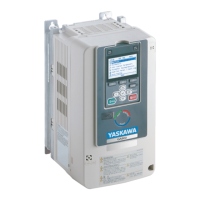
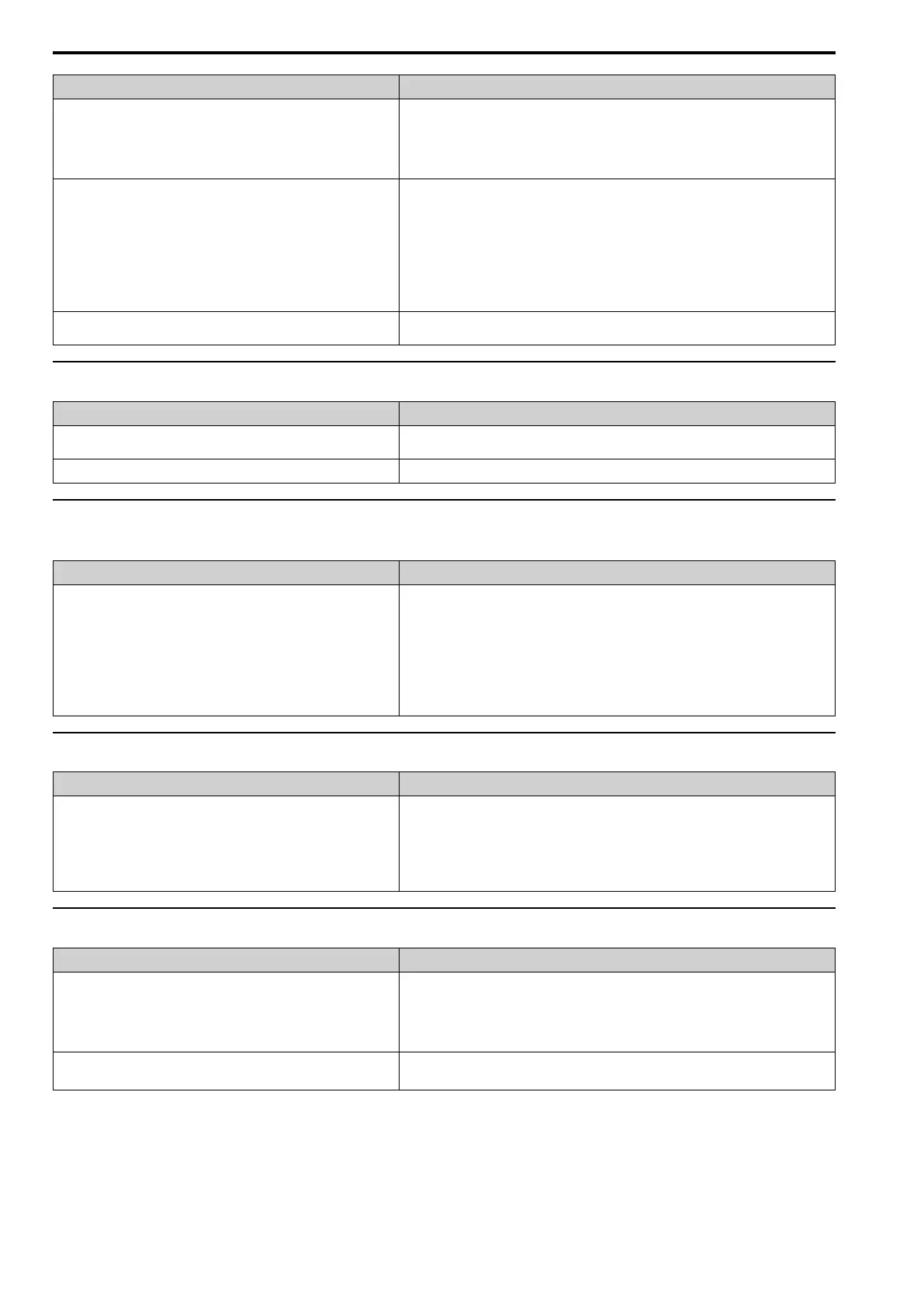